It is 3:10 a.m., well before dawn, when 27-year-old Derek gets up from the tiled floor in the basement of Yuliao Zhennan Temple in Xiluo Township in Yunlin County and carefully puts on some socks. Having traveled a considerable distance on foot, he has already developed a total of seven blisters on his feet, which are covered with gauze from heel to toe.
After putting on a second layer of socks, he slowly stands up, stretches his legs to ease the pain and soreness from two days of walking and gets ready for day three of the journey.
Derek, who hails from New Jersey in the United States, came to Taiwan for work four and a half years ago. This is the first time that he has joined the Dajia Mazu pilgrimage. He views joining the pilgrimage as the best activity for experiencing the relationships among the local people and understanding Taiwan’s religious culture.
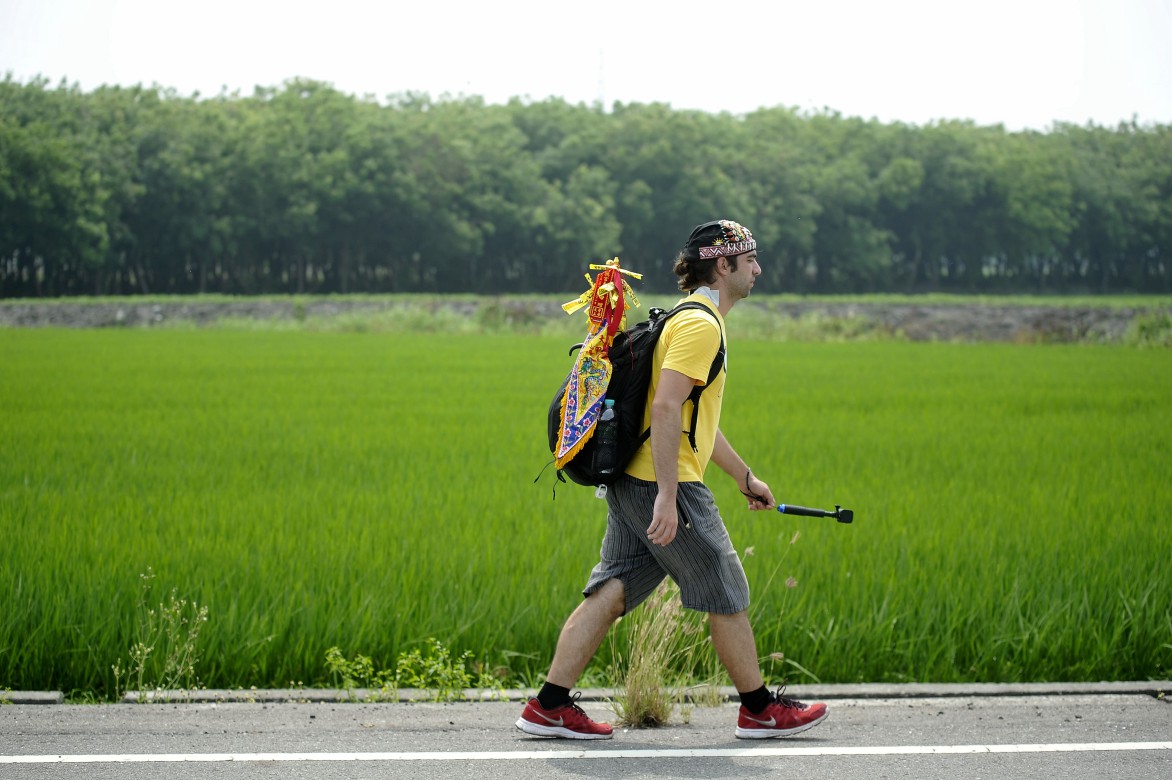
The Dajia Mazu pilgrimage has already achieved considerable international fame. Aside from European and American tourists, people of Chinese heritage from neighboring countries such as Singapore and Malaysia count among the loyal participants. What about the Mazu pilgrimage so fascinates these foreign nationals? What makes them die-hard fans who come back year after year, defying sore muscles, peeling skin and blisters on their feet?
On April 13, after 10 p.m., a sea of people floods the street in front of Zhenlan Temple in Taichung’s Dajia Township just as colorful fireworks, rising from the temple’s main hall, illuminate the night sky. After the last strings of firecrackers explode with loud bangs, the palanquin carrying statues of the goddess Mazu emerges from the temple, the crowd of fervent believers closing in frenzied excitement. Many people have been waiting for this moment with great anticipation since the Lantern Festival in February when the temple authorities decided the date and time for the launch of the pilgrimage by tossing moon sticks (Jiao Bei). (Read also: 13 Tips for having a deeper Taiwan Temple experience)
Across Taiwan, Mazu temples are celebrating the birthday of the goddess around the 23rd day of the third month in the lunar calendar (which fell on May 8 this year). Among these birthday festivities, the Dajia Zhenlan pilgrimage is by far the largest. In 2009, the market research team Lifelab estimated that approximately 930,000 people had participated in the pilgrimage. Given that participation has been steadily rising over the years, the million mark must have already been broken.

(Image source: Common Wealth)
In contrast to some other Mazu pilgrimages, the route for the Dajia Mazu pilgrimage is mapped out beforehand. Over a period of nine days and eight nights, the pilgrims cover a distance of 350 kilometers, departing from Dajia’s Zhenlan Temple. Over the following three days, the trek passes through the neighboring counties of Changhua and Yunlin to reach Fengtian Temple in Chiayi County’s Xingang Township. On day four, the main event, a traditional blessing and birthday ceremony, takes place, upon which the pilgrimage departs on the journey home, reaching its final destination, Dajia’s Zhenlan Temple, on the ninth day.
Since the long-distance trek is quite demanding, many believers only accompany Mazu’s entourage for part of the pilgrimage. Some choose to “follow Mazu” for the three-day leg to Fengtian Temple, whereas others opt for the longer five-day return trip. People who need to go to work during the week often go for a two-day, one-night stretch over the weekend.
Along the route, local citizens offer washing facilities, transportation or food and drink to the pilgrims, highlighting the hospitality and enthusiasm of the Taiwanese people.
In the early evening on day one of the pilgrimage, when Derek arrived near Nanyao Temple in Changhua City just before Mazu’s entourage entered the city, people along the road were handing him bottled water, vegetarian baozi buns, steamed mantou buns and drinks.
Derek notes that the Taiwanese are already very friendly in ordinary times, but during the pilgrimage their enthusiasm becomes even more palpable. “Loads of people give you things to eat; and it’s hard to say no to such smiling faces. You won’t ever get hungry,” he notes.
At the time, Derek had walked for twelve hours without taking a break, and he felt that his strength was waning. He was pleasantly surprised to find that a shower truck, donated by local people for the pilgrims, had been set up nearby. Exhausted pilgrims can also look for vehicles in the convoy that provide opportunities to rest along the route or near Mazu’s whereabouts on that day. Most easily recognizable as offering a respite from walking are small blue pickup trucks or delivery trucks stuffed with bedding and luggage. All along the route, enthusiastic locals also generously offer rides in their private cars.
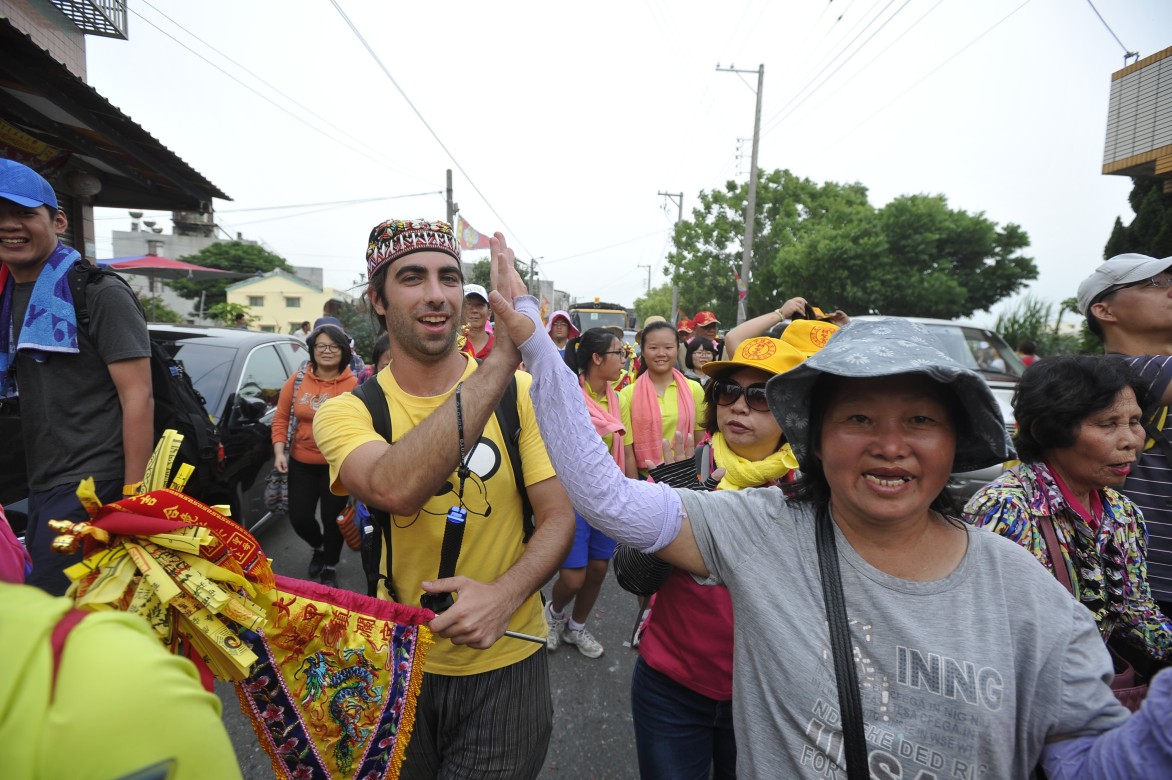
Around 10 p.m. as Mazu had yet to reach Nanyao Temple, Derek decided to move ahead to the next temple. Near Yufeng Temple, also located in Changhua City, Derek feasted on a delicious thick vegetarian soup with mushrooms and various greens, and laced with Chinese medicinal herbs. The local people claim it works like a tonic, replenishing energy, strength and endurance. On day two, Derek still relishes the tasty memory.
As Derek recounts the enthusiastic support he has encountered along the way, he says that he completely understands what drives the locals, saying that every single person seems like one’s own cheerleader, contributing in their own way.
This fervor is not only rooted in the trademark hospitality of the Taiwanese, it can be attributed to people’s “feelings” for Mazu. Lin Mao-hsien, associate professor at the Department of Taiwanese Languages and Literature of National Taichung University, has joined the Mazu pilgrimage for the past 26 years. Lin points out that believers perceive any services they offer to pilgrims, be it food or showers, as “doing good deeds for Mazu by giving alms.”
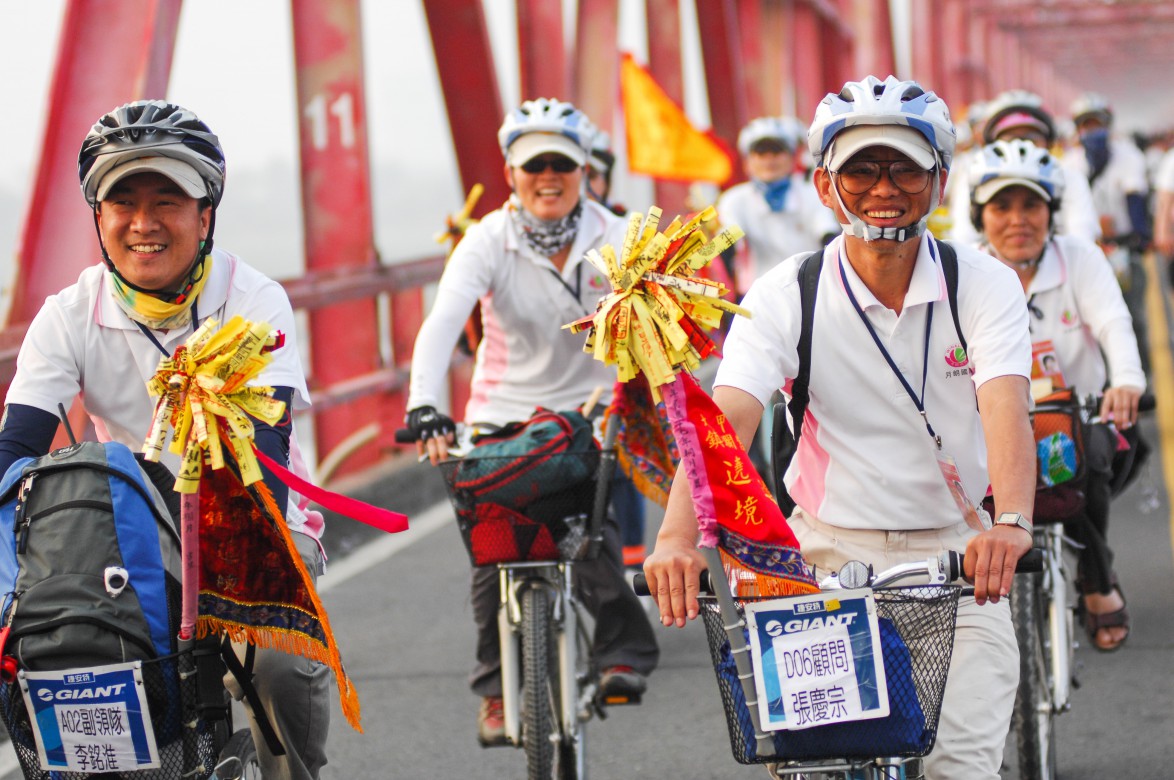
The Dajia Mazu Pilgrimage can also be viewed as a tour for sampling Taiwanese signature products, since the locals hand out the best locally produced goods to passing pilgrims. Lin observes that people were endowed with socks and umbrellas in Changhua County’s Shetou township [a hosiery manufacturing hub], whereas watermelon and corn on the cob featured prominently in Yunlin County. “They had already cooked and shucked the corn, and even brushed it with salt water,” recounts Lin.
Around 5 a.m. on day two, Derek began his walk from Fu-an Temple in Changhua County. As he walked across Xiluo Bridge spanning the Zhuoshui River, he ran into a group of people from Hsinchu who were handing out shuirunbing, a soft, cinnamon-flavored flatbread unique to Hsinchu. Derek’s first bite tasted rather bland, but then the cinnamon flavor gradually grew. It was the first time that he had tasted such rustic food.
Shuirunbing is a Hsinchu specialty. Since the bread is usually distributed during religious festivals and processions to bring protection and peace, they are also known as “peace bread.” It should not be confused with the similarly named run bing, a thin wrap with a filling of various vegetables, peanut powder and seasoning. (Read also: 8 Taiwanese foods that you don’t even know you need to try (yet)!)
Shuirunbing are made only from flour and water with a dash of salt, sugar and natural spices. Due to its high water content, the flatbread is very soft, a sensation described in the Minnan dialect as being “soft as water” which sounds like shui run – hence the name.
After crossing Xiluo Bridge, which links Changhua and Yunlin counties, the route follows Jianxing Road and Yanping Old Street, the most boisterous area of Xiluo Township. During the Qing Dynasty and the following Japanese colonial period, this was an important commercial district. During an urban modernization project in the 1930s, several wealthy landowners built elegant mansions here. Jiefa Tea Shop, which now serves as Xiluo Cultural Museum, and Yongfeng Grain Store are typical remnants of this era. Xiluo also boasts some Japanese-style houses from the colonial era, giving the town a distinct nostalgic flair.
Having enjoyed the roadside banquet on Fuxing Road, which had been donated by the local community, Derek rushed on in the afternoon of day two to reach Zhennan Temple around 9 p.m. Although the sedan chair with the goddess was not expected before 2 a.m. most pilgrims formed an advance party that arrived earlier.
Since the troupe carrying Mazu’s palanquin will rest for only a few hours at most, most pilgrims try to arrive several hours ahead of the goddess to have enough time to shower and sleep. Moreover, most local people will clear away donated food and drinks as soon as Mazu’s sedan chair has passed.
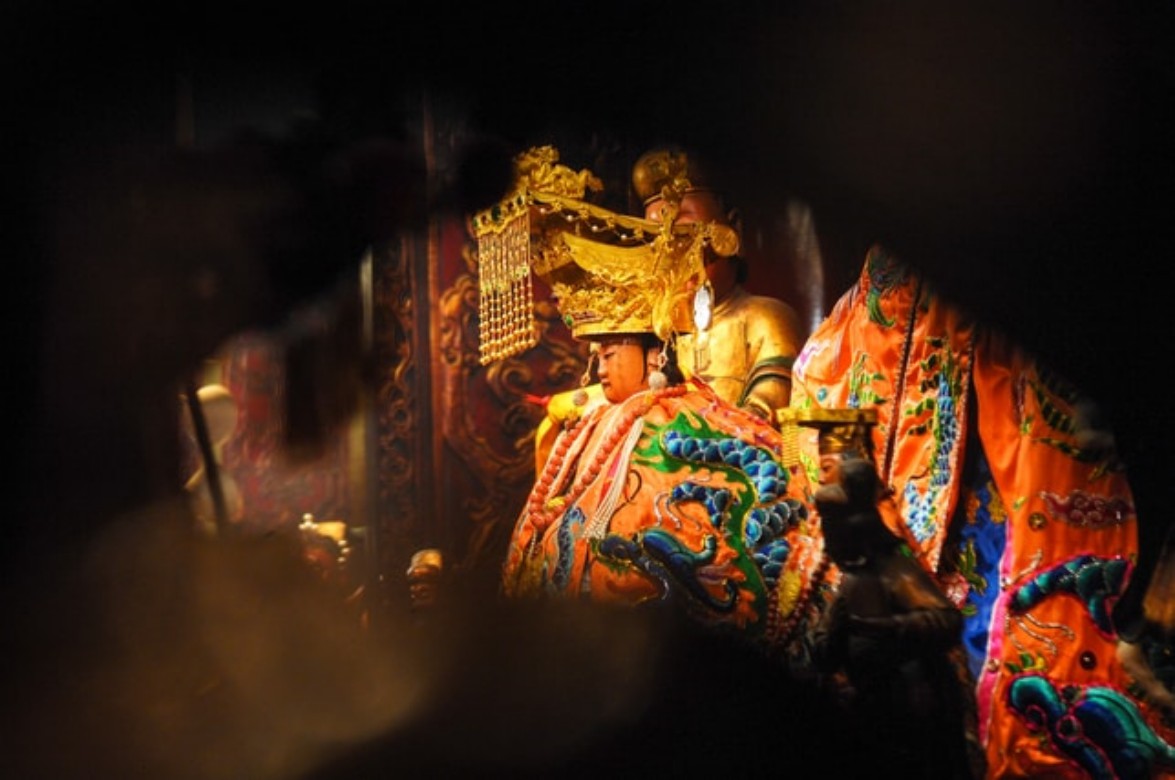
“Come on, come on, be our guest and have a bite,” shouts Liao Ching-biao, the head of the Zhennan Temple Committee, into his microphone, inviting hundreds of pilgrims to partake of the offered food. On the plaza in front of the temple, three tables are piled high with a dozen snacks such as rice dumplings, fried king oyster mushrooms, fried sweet potato chips, stir-fried noodles, vegetarian rice cakes and the like. Liao does not forget to mention that the delicious vegetarian dishes were created by the head of the temple’s sutra chanting troupe, a vegetarian and accomplished cook.
Aside from the dozens of dishes that were cooked up from dawn to dusk on day two of the pilgrimage, the temple’s famous rice porridge equally attracts a large number of foodie pilgrims. On day three, temple authorities prepare a rich rice porridge with a broad variety of ingredients, including oysters, cabbage, mushrooms and carrots. Liao points out that many of the pilgrims arriving on day three actually come by charter coach just to enjoy the temple’s rice porridge. Although half of the food was donated by the local community, the temple administration still spent around NT$300,000 on food.
The temple premises are strewn with sleeping bags and tents. However, for Derek, who slept in front of the temple on the previous night, sleeping in the well-ventilated 30-square meter temple basement is an “upgraded” service.
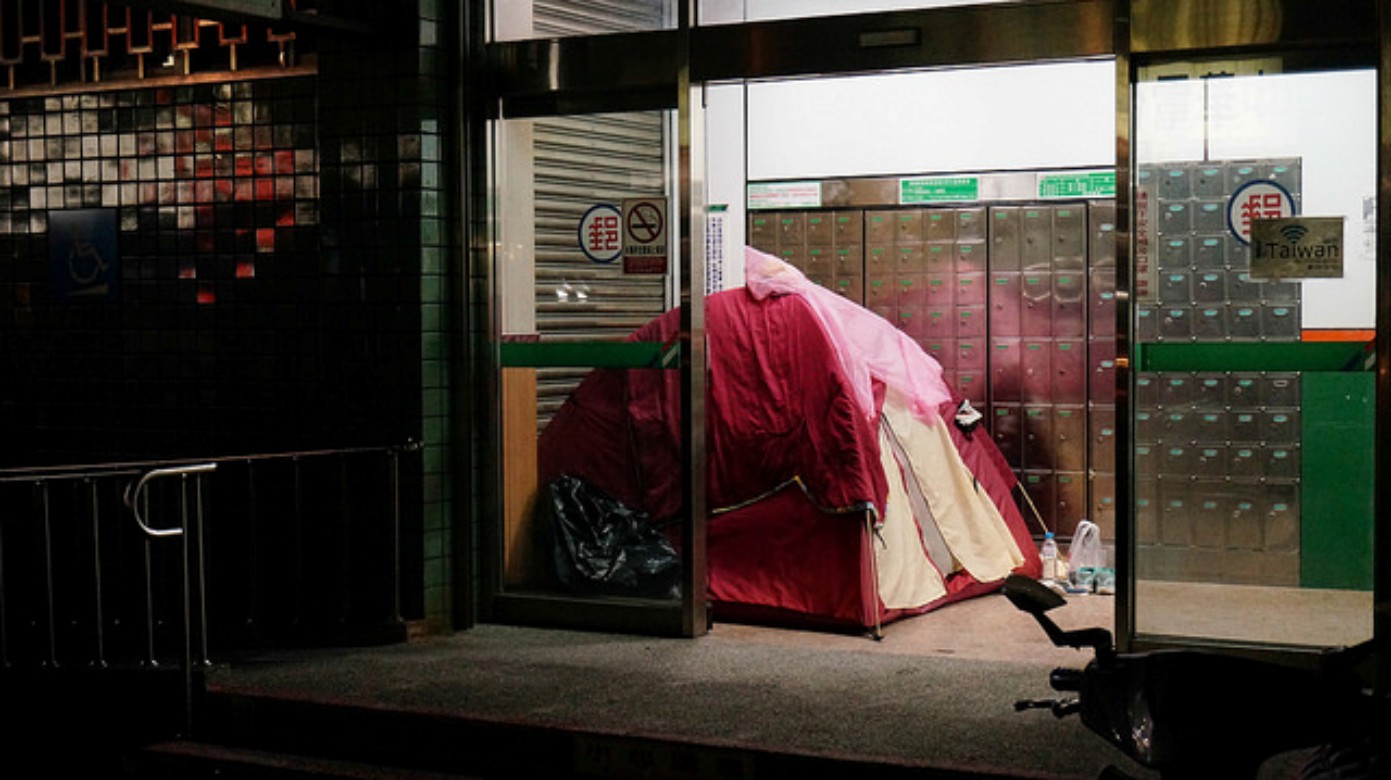
During the pilgrimage, most participants just sleep where their feet carry them by the end of the day. The fast walkers stand a chance at getting a place at nearby pilgrims’ hostels. But since these are usually fully occupied, one must be prepared to sleep on the side of the road on a yoga mat, camping mat or in a sleeping bag.
Taiwan’s Beauty Lies in its Human Touch
Lin Pin-chou from Malaysia got his first brush with Taiwan’s human touch, the kindness and enthusiasm with which the Taiwanese take care of others, in connection with the goddess Mazu. Lin came to Taiwan in 2008 on an individual tour to visit and pray at Mazu temples. While surfing backpacker websites, he received numerous enthusiastic responses.
“Some said when you come to Yunlin I will show you around; others said they wanted to invite me for a meal, or that I wouldn’t have to pay for staying at the hostel,” Lin recalls. “At that time I discovered that Taiwan’s greatest beauty lies in its human touch,” declares Lin, nearly tearing up with emotion.
Inspired by this experience, Lin returned to Taiwan six years ago to attend graduate school. Since then, he has accompanied “great grandaunt,” as devotees with the Surname Lin call Mazu, on her pilgrimage every year. Last year, he became a die-hard fan, vowing to join the pilgrimage every year for the rest of his life. Lin feels particularly close to Mazu because the goddess, whose father was Lin Yuan, bears the same family name as he does. He believes that by calling Mayu “grandaunt”, she can realize that he is one of her blood relatives.
Just how devoted the Mazu believers are is also evident in their eagerness to “take Mazu out for an inspection tour.” Lin observes that along the route, devotees bring Mazu statues from their homes with them to have the goddess join the pilgrimage, a practice unseen in Malaysia. “The Taiwanese really love their gods dearly,” says Lin.
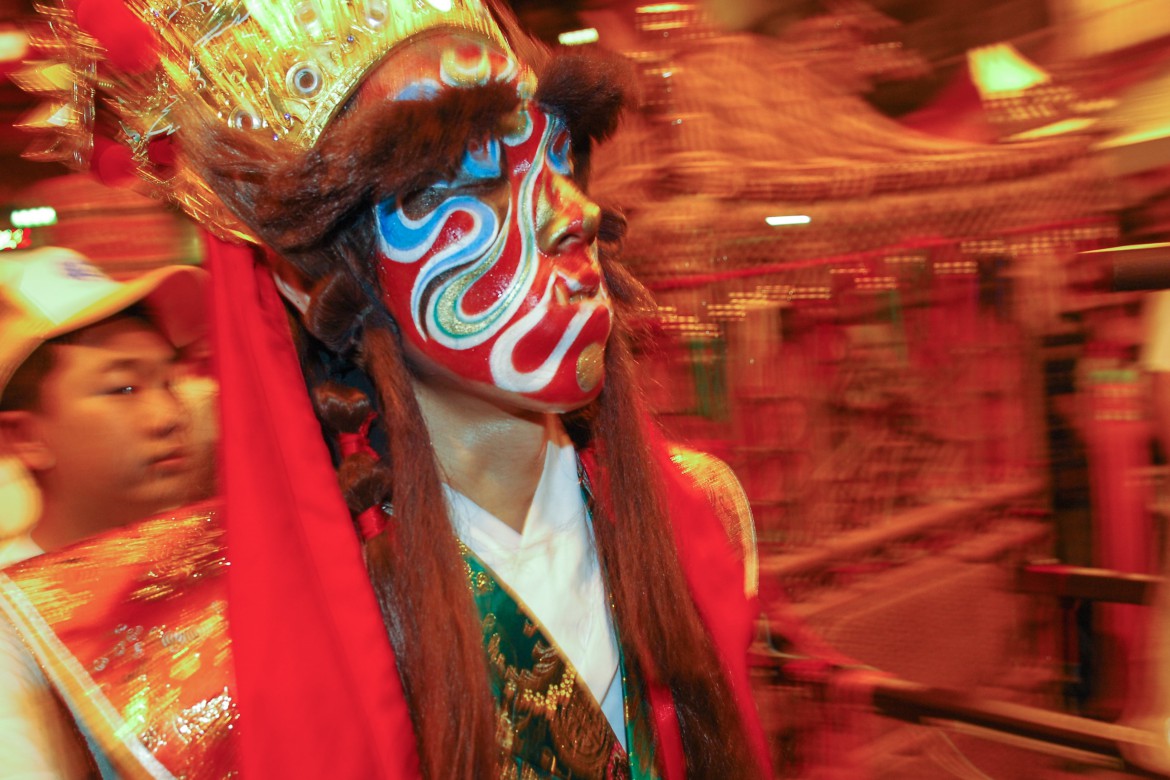
The Dajia Mazu pilgrimage dates back to Qing Dynasty rule during the 18thcentury when people made a pilgrimage to Meizhou Island, [a small island off Fujian Province and the birthplace of Mazu], every twelve years to pay homage to her. However, cross-strait contacts were severed with the beginning of the Japanese colonial period. Consequently, in 1914, Mazu devotees began to visit [the Mazu temple] in Beigang in Yunlin County instead.
In 1987, the pilgrimage to the ancestral temple on Meizhou resumed, passing via Japan [in the absence of direct cross-strait travel links]. Subsequently, in 1988, the Daijia Mazu pilgrimage made Xingang in Chiayi County its final destination due to a dispute with the ancestral temple on Meizhou over the imparting of Mazu’s divine spirit [in the form of a new statue] to a new temple.
The most famous aspect of the pilgrimage is the practice of crossing under Mazu’s sedan chair to obtain her blessing. Wherever Mazu passes through on her long tour, devotees kneel down and bow their heads in two rows on the road, waiting for the sedan chair to pass above them.

Popular belief also holds that helping carry the sedan chair or holding an umbrella to shield Mazu against the scorching sun will bring good luck. Therefore, people queue up in long lines every year to join the sedan chair carrier troupe.
As more and more tourists and non-devotees are participating in the pilgrimage, certain taboos and etiquette dictated by religion and folklore should be addressed. For instance, well-meaning people will remind those waiting to pass under the sedan chair that they must not carry flags.
As Associate Professor Lin explains, the colorful embroidered pilgrimage flags symbolize that the carrier is a soldier of the goddess, and letting a soldier pass under the sedan chair would be impolite to Mazu. Lin says that no matter whether one believes in these taboos, honoring them is a demonstration of respect for religious beliefs.
The fact that non-organized, individual pilgrims may also participate in the tasks carried out by Mazu’s divine entourage shows just how tolerant Taiwanese folk religion can be.
Hung Ying-fa, a postdoctoral researcher of religious studies with the Research Center for Humanities and Social Sciences of Academia Sinica, observes that, in order to play an active role in many religious festivals overseas, people must belong to the respective religion or hold a certain rank within the clergy, while the vast majority of ordinary people can only revel in the excitement from the sidelines. This is not the case with the Mazu pilgrimage. Hung explains that here “you can easily become a participant” by carrying the sedan chair or by accompanying the entourage, or doing chores such as preparing food and beverages.
Thanks to its openness and diversity, the Dajia Mazu pilgrimage attracts a broad variety of people, no matter whether they come to sample the special foods offered along the route, experience the genuine kindness and warmth of the local people or witness traditional ceremonies. This mammoth event showcases the approachability and tolerance of Taiwan’s religious culture. It is these unique experiences of the local culture that constitute the true soft power of Taiwan.
My Beautiful Taiwan Tour
If one wanted to tell a beautiful story about Taiwan, what would it be?
Would it feature the island’s majestic mountain range or its winding coastline? Or highlight the vibrancy of its rural villages or the cosmopolitan spirit of its metropolitan areas?
There’s one thing, of course, that must not be left out – the island’s most beautiful feature – the Taiwanese human touch, the kindness of the people here.
In the course of our everyday lives, we can see Taiwan’s diversity and variety. Through quality tourism based on authentic local experiences, we can make Taiwan a place for living the good life. This spectacular isle offers endless adventures. Let’s invite the world to join the fun!
Translated by Susanne Ganz
Edited by Sharon Tseng
(This article is reproduced under the permission of CommonWealth Magazine English Website. It does not represent the standpoint of Taiwan Scene.)
Read more: 13 Tips for having a deeper Taiwan Temple experience

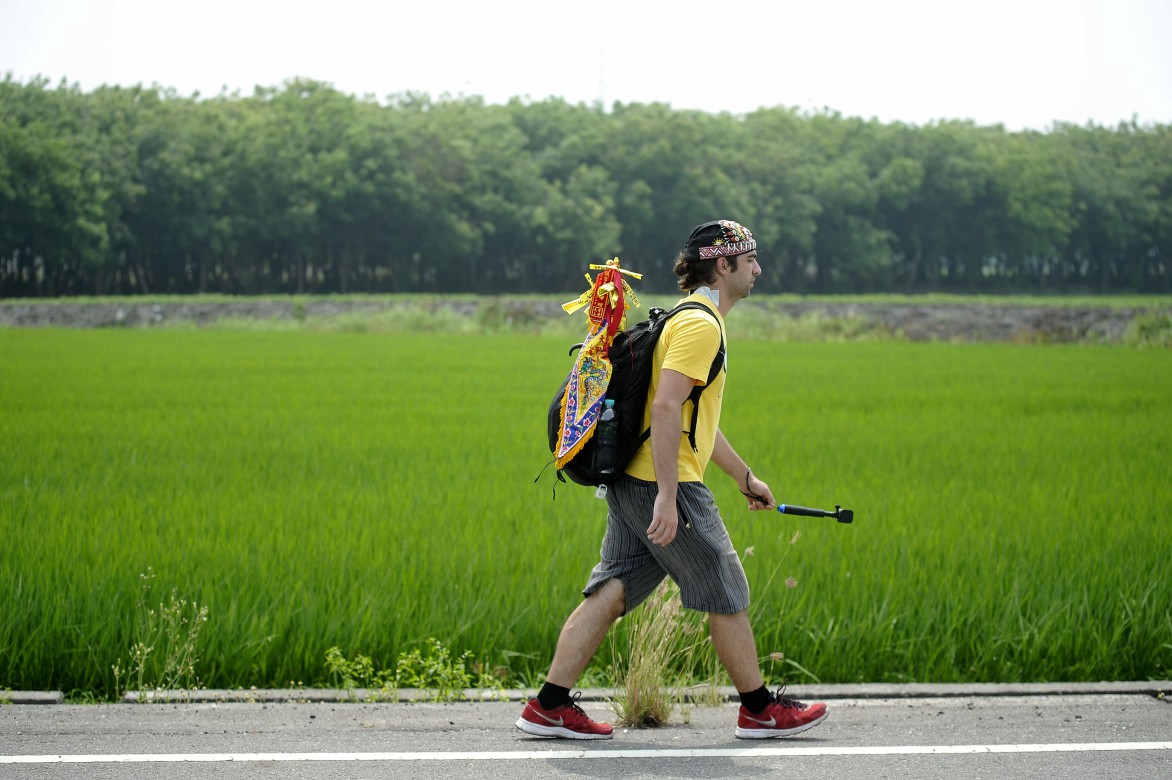
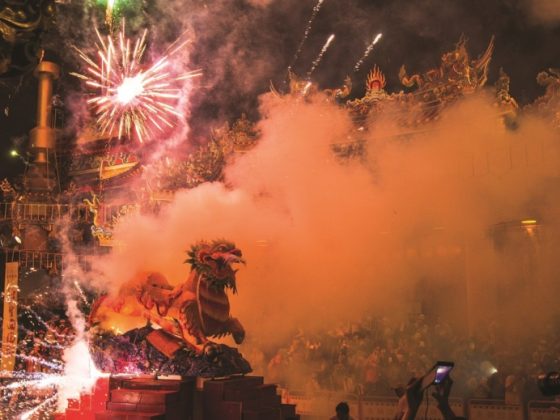
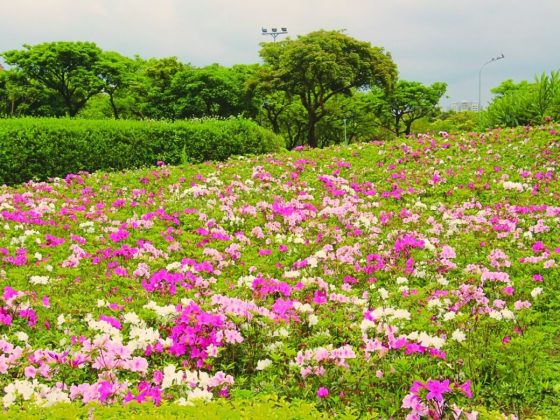









Comments are closed.